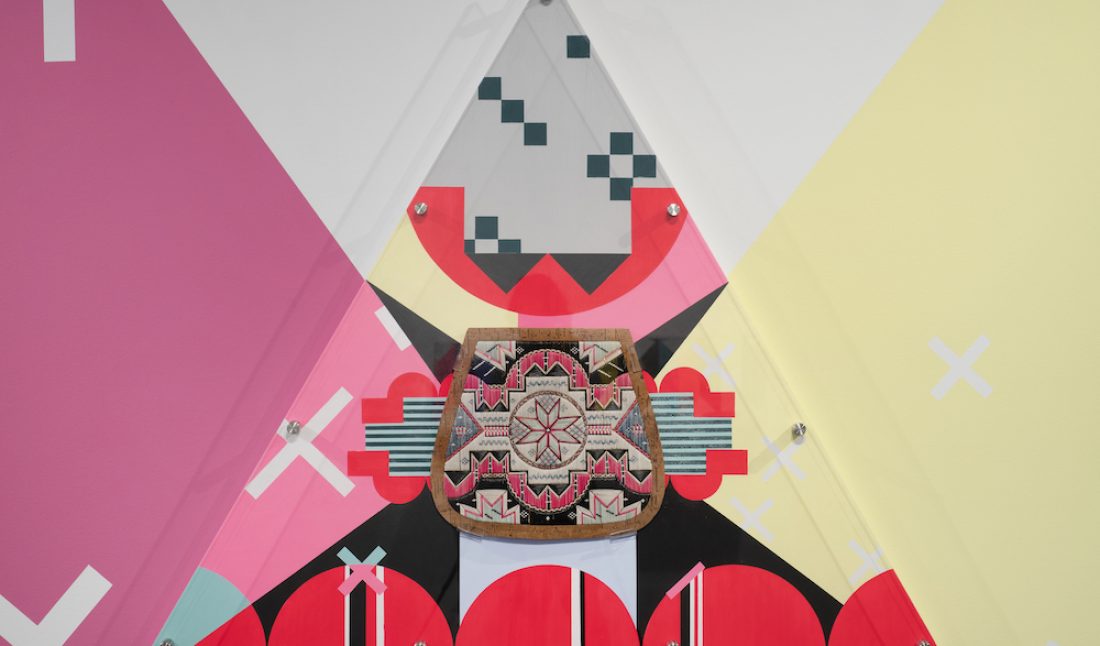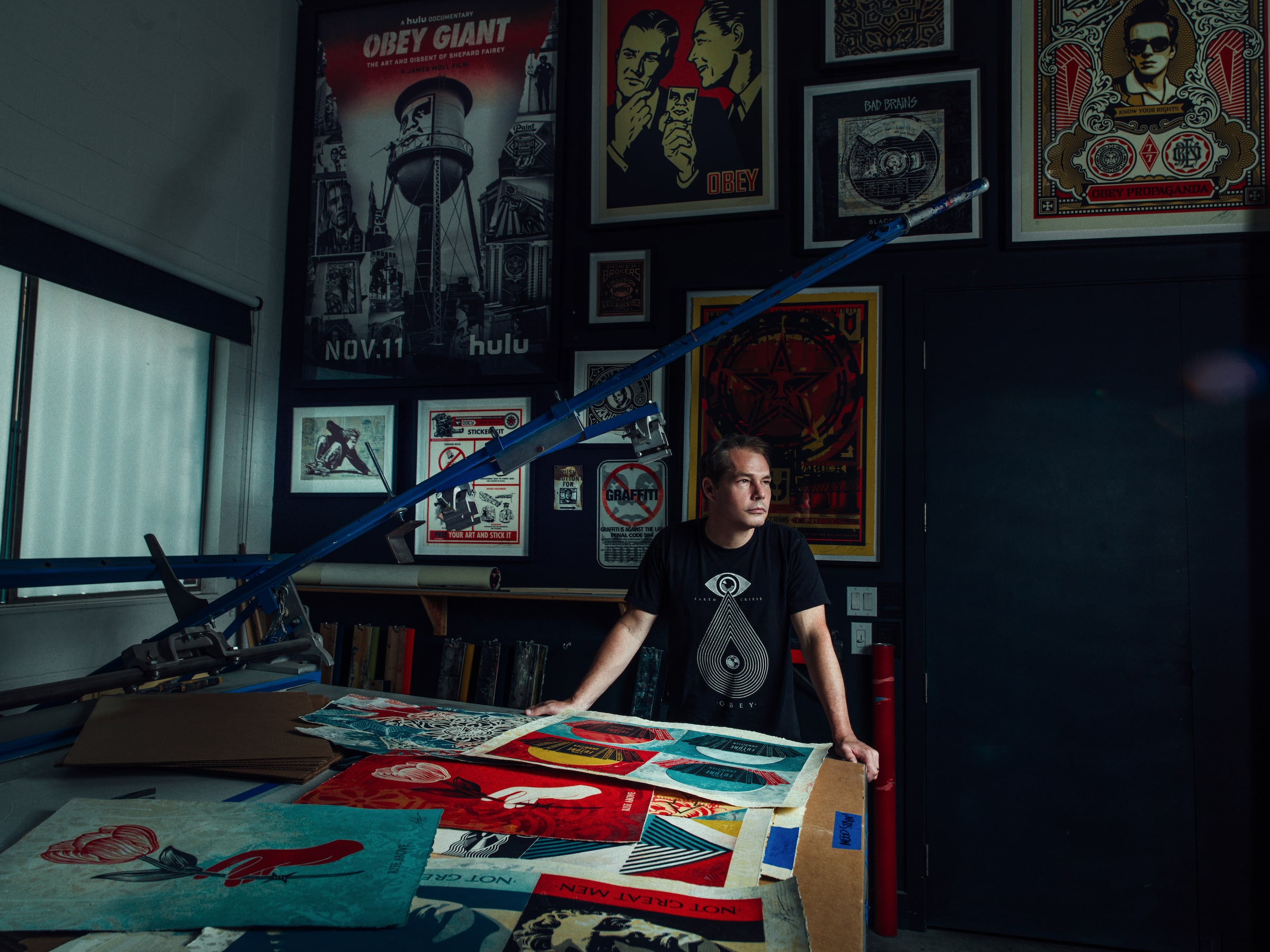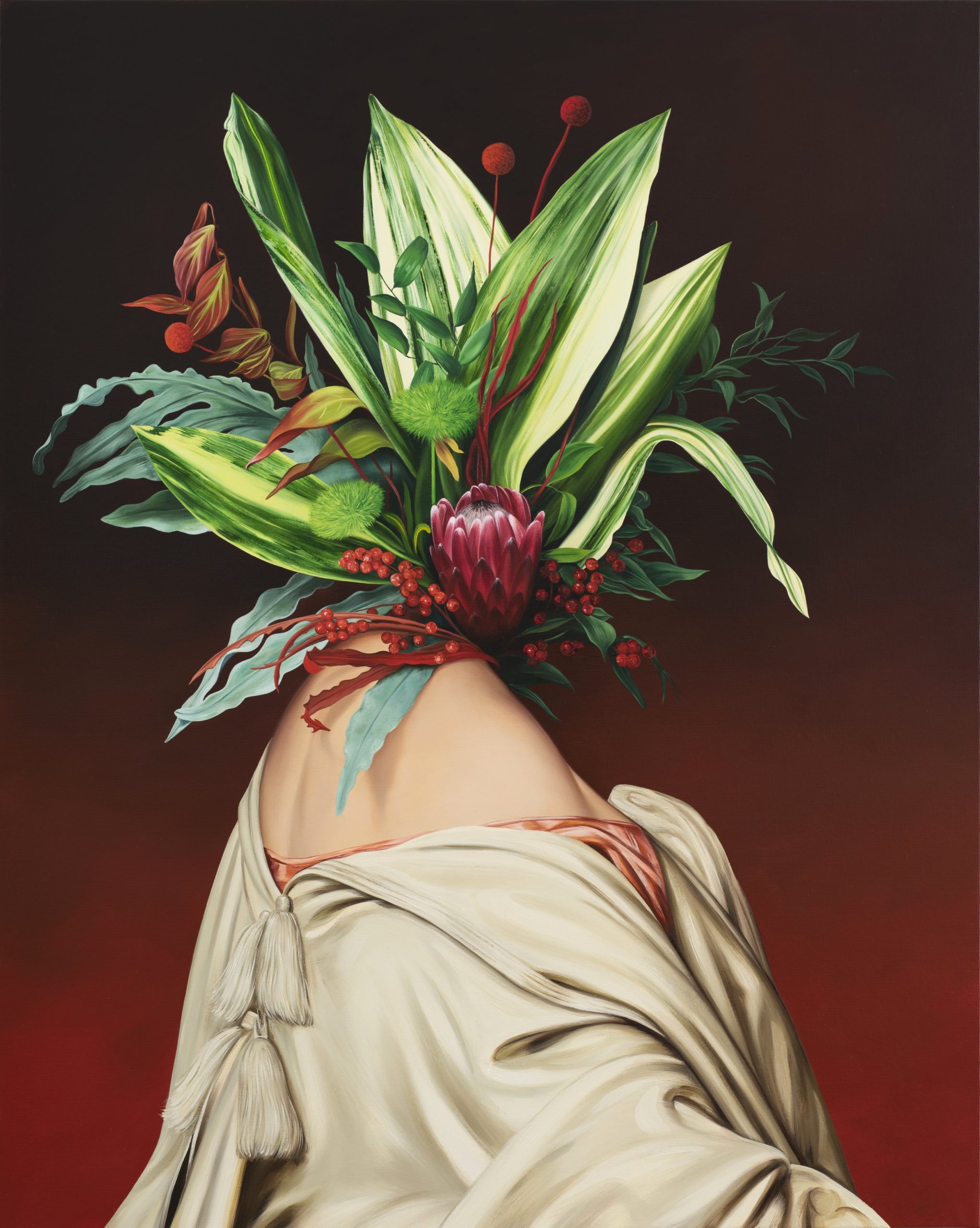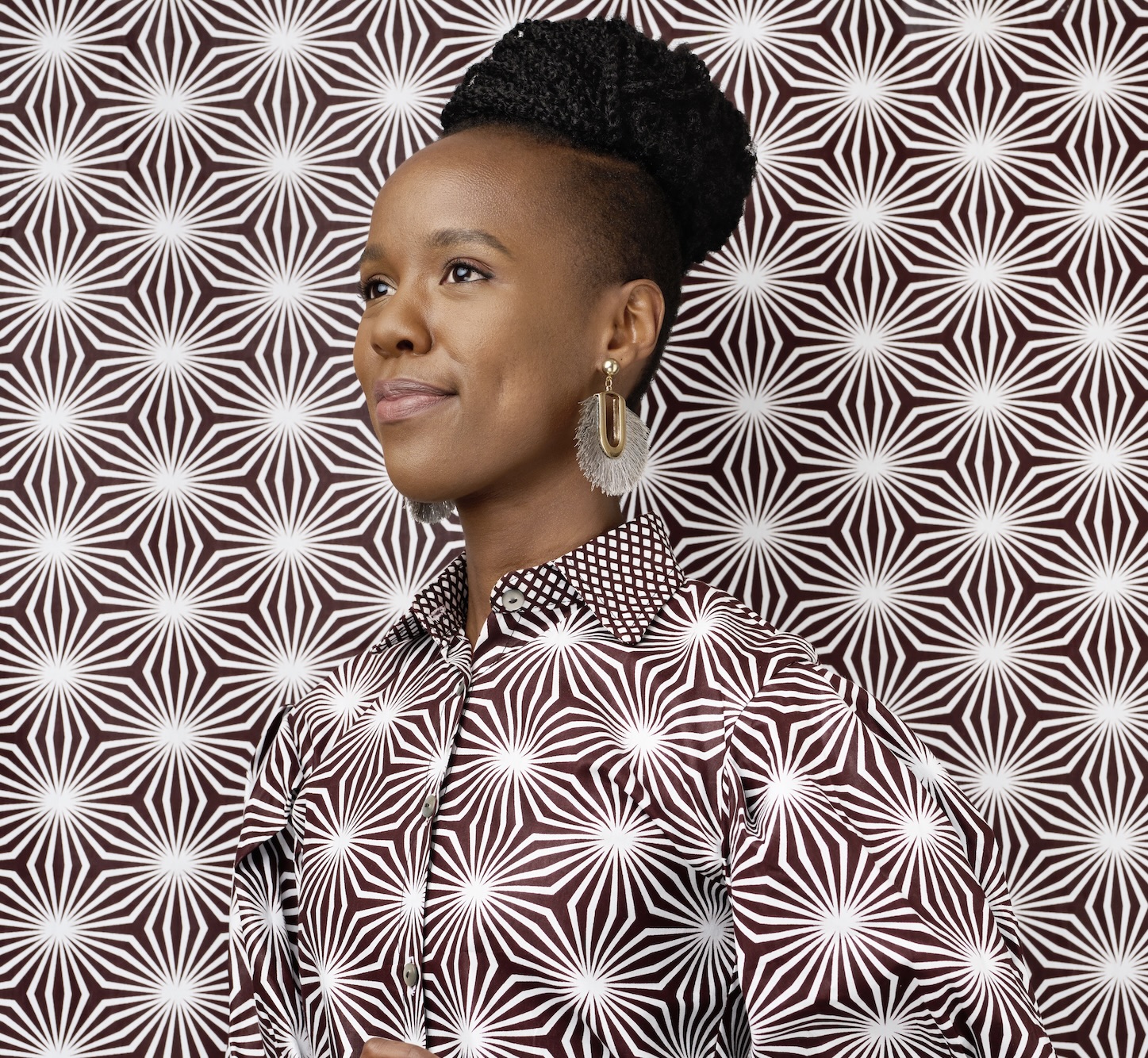Jordan Bennett’s “Souvenir” was on view through December 10, 2022. The solo show at the Ontario College of Art & Design (OCAD) University’s Onsite Gallery is accompanied by a large-scale outdoor mural, pi’tawita’iek: we go up river, on the south wall of the main campus.
Bennett’s vibrant work—full of color, pattern, symbols, and geometries—is inspired by the intricate porcupine quillwork of his Mi’kmaq culture. In his practice, the Newfoundland–based artist visits with cultural objects of his community now sitting in the archives of institutions near and far, having been taken from their ancestral home. He has worked over the years to develop a relationship with the institutions in order to gain access to these objects, many created by the Mi’kmaq artisans for the demands of foreign tourists in order to support their families. In “Souvenir,” curated by the executive director and curator of Indigenous art at Onsite Gallery, Ryan Rice, the artist extends that access to viewers, allowing them to commune with a storied visual language just as he was able to. In the show, the historical quillwork objects are centered on walls in conversation with each other, from which Bennett’s paintings extend onto canvas and even beyond to the walls.
Whitewall spoke with Bennett about providing greater access to his culture’s community belongings, within art spaces and public places.
WHITEWALL: “Souvenir” and the outdoor mural pi’tawita’iek: we go up river were both several years in the making. What was the starting point for them?
JORDAN BENNETT: The show came to me after a visit with Ryan Rice, the curator of this show. Ryan came to see my solo show at the Art Gallery of Nova Scotia in 2018. It was supposed to open in June of 2020—and then the pandemic. So it was amazing to have so much extra time. This is a project with so many different hands at play, different museums that were on board for lending us some of these community belongings.
WW: How did you arrive at working with these cultural objects, the quillwork pieces?
JB: The whole object of the show was borrowing pieces from museums that were from my nation, the Mi’kmaq nation—allowing space and time for me to visit with these pieces and to communicate by extending their designs. Some of these porcupine quill pieces are over two hundred years old. It gave me a chance to take them out of the museum and put them in the public, allowing the public to view them in a different way and to visit with them.
When I lived in Halifax, I used to visit the Nova Scotia Museum a lot. The curator there, Roger Lewis, is Mi’kmaq. And Roger allows the Mi’kmaq community to come in and visit with our community belongings whenever we want. I ran this idea by him, of being inspired by porcupine quill pieces by ancestor artists and continuing these conversations over time. He allowed me to borrow the pieces for that purpose. And by getting Roger on board, it opened the door for me to ask other institutions. It allowed me to bring pieces from our community that haven’t been back to Nova Scotia in almost two hundred years, back to Mi’kmaq territory.
WW: Can you speak more to the significance of these quillwork pieces?
JB: All these core pieces were created by Mi’kmaq people between the 1700s all the way up to our current time. But a lot of them were created as a means to put food on your table, and they were made in response to European trade, settler trade, coming in and wanting to have pieces of culture and our designs to bring back home. So Mi’kmaq makers—primarily women—would sit together in community, around a kitchen table, and create these porcupine quill pieces. Oftentimes they were seat back covers or placemats or wall hangings. They were doing all these pieces for trade as souvenirs, as a way to put food on the table because it was the only thing Indigenous people were able to do. We weren’t allowed to work in the workforce at the time. It was a way to make and create and sustain.
A lot of my work goes between the worlds of fine art and more of a consumer-based design background. So OCAD thought it would be great for the students and community around to see the melding of both fine art and design. As you see, they are very color based and they are quite geometric, which is all embedded in the traditional porcupine quill designs themselves. So going back to the 1830s, our porcupine quills were hot pink, fluorescent greens, and all these different colors. So that’s where I pull a lot of inspiration for those pieces.
WW: What was the process like, starting with these community belongings, and having your paintings extend outward from them?
JB: I can’t take the quillwork pieces out of the museum to work on my paintings. I get to visit with them if I’m lucky. The first time I actually physically saw those pieces was the day we installed them. I was given these high-res photos that I printed to the millimeter on photo paper. I placed them on a backing, and then I started to elaborate on the design and communicate between centuries. The magic happens when you get in the space and you finally get the core piece in your hands, and you can lay it on top of the painting and they line up. That’s the magic in the show for me, getting to be surrounded by these ancestor artists. And allowing them to tell me what to do.
I look at them as stories. Because the impact of colonization on our people and oral traditions and our populations have been decimated, a lot of these stories and a lot of these meanings are yet to be found again. This has been for me a way to help give meaning back to some of these pieces. I don’t look at it as if it’s linear.
A lot of the time, these community belongings are stuck in a glass case, or stuck in a drawer, and nobody looks at them for forty to fifty years. To give them a chance to have a new life is very important to my practice.
Historically, a lot of folks of color don’t feel comfortable in galleries. They weren’t made for them. So, if I can create a way for them to feel more comfortable and visit and spend time in the gallery, that’s my job done. This is what I want to do.











